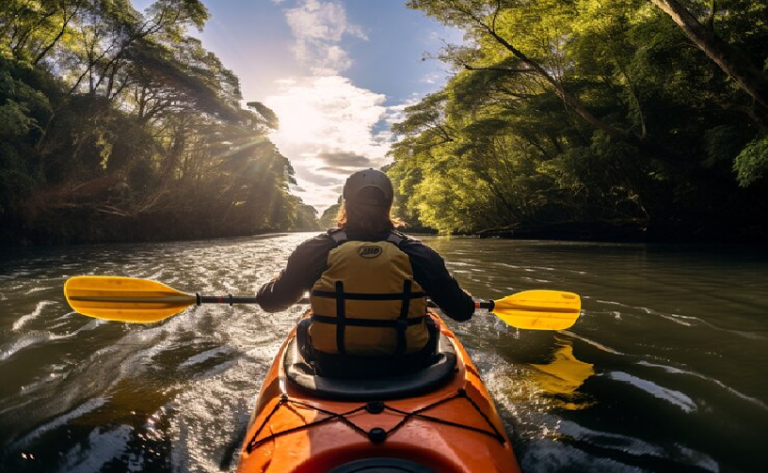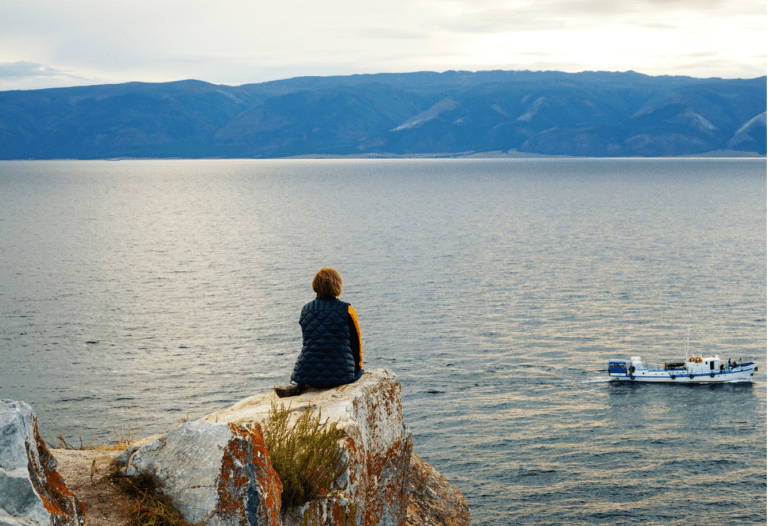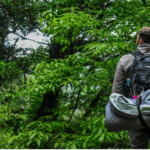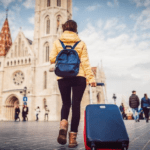
I. Introduction
Embark on a thrilling journey of self-discovery, fueled by the freedom of solo travel on a tight budget and the exhilaration of exploring new horizons. Don’t let budget constraints hold you back from quenching your wanderlust.
Traveling solo opens up a world of possibilities, allowing you to have complete control over your itinerary and experience the joy of making unforgettable memories.
Imagine indulging in local cuisines, immersing yourself in unique cultures, and pushing your boundaries, all while keeping your wallet happy.
With careful planning and a few insider tips for solo travel on a tight budget, you can unlock the adventure of a lifetime without much damage to your pocket.
Join the ranks of knowledgeable budget travelers and embark on an affordable solo vacation that will leave you with lifelong memories and a renewed sense of independence.
Remember, solo travel on a tight budget is all about finding creative ways to save money while still enjoying incredible experiences.
So pack your bags, embrace the freedom of solo travel, and get ready to embark on a remarkable journey that will ignite your sense of wanderlust without breaking the bank in 2024.
II. Researching and Planning Your Trip
A. Thoroughly researching your destination before going
1. Explore Off-the-Beaten-Path Destinations:
While popular tourist destinations may be tempting, they often come with higher price tags. Consider exploring lesser-known or off-the-beaten-path destinations. These places not only offer unique experiences but are also generally more budget-friendly.
2. Check the visa and entry requirements:
Before finalizing your destination, check the visa and entry requirements for solo travelers. Some countries may have specific regulations or visa fees for individual travelers.
3. Learn about local culture and customs:
Understanding the local culture and customs can not only enrich your travel experience but also help you avoid unnecessary expenses.
For example, in some countries, bargaining is a common practice, and knowing how to negotiate can save you money in markets.
4. Read Travel Blogs and Forums:
Seek insights from fellow travelers who have visited your chosen destination. Travel blogs and forums are valuable sources of information for budget-friendly tips, hidden gems, and honest reviews of accommodations and attractions.
B. Finding accommodations, transportation, and attractions when Solo traveling on a tight budget
5. Use Price Comparison Websites:
Price comparison websites for accommodations and flights are excellent tools for finding the best deals. Look for options that offer value for money without compromising on safety and comfort.
6. Book Transportation in Advance:
Booking your transportation in advance can lead to significant savings, especially for flights and long-distance trains.
Be on the lookout for special discounts and deals offered by airlines and rail operators.
7. Use local transport:
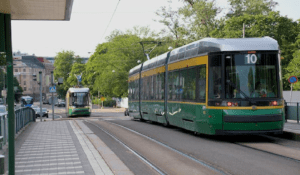
Instead of relying on taxis or private car hires, opt for local transport options like buses, trams, and trains. Not only are they more affordable, but they also allow you to experience the local way of life.
C. Taking advantage of early bird discounts and promotional offers
8. Subscribe to Newsletters:
Sign up for newsletters from airlines, travel agencies, and booking platforms to stay informed about exclusive deals and promotions.
They often offer early bird discounts and flash sales for subscribers.
9. Follow Travel Companies on Social Media:
Many travel companies announce limited-time offers and discounts on their social media channels. Be sure to follow them to catch any deals that might be available for your preferred destination.
10. Utilize Loyalty Programs:
If you frequently travel with a specific airline or stay in certain hotel chains, join their loyalty programs. Accumulate points or miles that can be redeemed for future trips or upgrades, saving you money in the long run.
11. Be Flexible with Your Travel Dates:
Flexibility with travel dates allows you to take advantage of lower fares and rates. If possible, avoid traveling during peak seasons, holidays, and major events when prices are generally higher.
You can thoroughly research your destination, find budget-friendly accommodations and transportation, and take advantage of early bird discounts and promotional offers. Thus, you can plan a cost-effective solo trip that doesn’t compromise the quality of your experience.
Remember, the key to successful budget travel is being resourceful, open-minded, and proactive in seeking the best deals and opportunities. Happy solo travels!
III. Traveling During Off-Peak Seasons when Solo Travel on a Tight Budget
A. Benefits of choosing off-season travel
12. Cost Savings:
One of the most significant advantages of traveling during off-peak seasons is cost savings. Accommodations, flights, and attractions often offer reduced rates during periods of lower demand.
This means you can enjoy the same experiences at a fraction of the cost compared to peak tourist times.
13. Less Crowded Destinations:
Off-peak travel allows you to experience destinations with fewer crowds. Popular tourist spots can become crowded and overwhelming during peak seasons, detracting from the tranquility and enjoyment of your trip.
Off-peak periods offer a more relaxed and intimate experience, giving you the opportunity to savor the beauty and culture of a place without the hustle and bustle.
14. Greater Availability:
During peak tourist seasons, popular accommodations and attractions can quickly get fully booked. However, by traveling during off-peak times, you have a better chance of finding available and even upgraded options for accommodations and activities.
15. Authentic Local Experiences:
With fewer tourists around, locals have more time to engage with visitors on a personal level. This opens up opportunities to learn about their culture, traditions, and daily life, leading to more authentic and meaningful travel experiences.
B. Lower prices and fewer crowds during off-peak periods
16. Off-Peak Seasons by Destination:
The off-peak season can vary by destination. For example, in tropical regions, the off-peak season might coincide with the rainy season, while in popular winter destinations, it could be the summer months. Research the specific off-peak periods for your chosen destination to plan your trip accordingly.
17. Discounted Flights and Accommodations:
Airlines and hotels often offer discounted rates during off-peak seasons to attract travelers. Use flight comparison websites and booking platforms to find the best deals on flights and accommodations.
18. Enjoy Popular Attractions Without Crowds:
Tourist attractions that are usually swarming with visitors during peak seasons can be more enjoyable and easier to explore during off-peak periods. You can take your time appreciating the beauty and history without feeling rushed.
19. Experience Local Festivals and Events:
Some destinations have vibrant festivals and events that take place during the off-peak season. Attending these local celebrations can provide unique cultural experiences and insights into the traditions of the region.
20. Adapt to Weather Conditions:
While off-peak travel might mean encountering less-than-ideal weather conditions, it can also lead to memorable experiences.
Embrace the weather and take advantage of activities that are best enjoyed during specific seasons, such as skiing in winter or witnessing blossoming flowers in spring.
21. Flexibility in Itinerary:
With fewer tourists competing for limited spots, you have the flexibility to modify your itinerary on the go. This allows you to explore hidden gems and off-the-beaten-path attractions without worrying about overcrowding.
You can choose to travel during off-peak seasons, you not only save money but also gain the opportunity to immerse yourself more deeply in the local culture and ambiance of your destination.
Embrace the unique experiences that off-peak travel offers and make the most of your solo adventure while savoring the benefits of a quieter and more affordable journey.
IV. Tracking Fares and Finding the Best Deals when Solo Travel On a Tight Budget (applicable anytime)
A. Being flexible with travel dates for cheaper flights
22. Weekday vs. Weekend Travel:
Flight prices can vary significantly based on the day of the week you choose to travel. Generally, flying on weekdays (Tuesday to Thursday) is often cheaper than traveling on weekends (Friday to Sunday) when there is higher demand from both business and leisure travelers.
23. Avoiding Peak Days:
Try to avoid flying on peak travel days, such as holidays or long weekends, as airlines tend to increase prices during these periods due to higher demand.
24. Red-Eye Flights:
Red-eye flights, which depart late at night and arrive early in the morning, are usually less expensive than daytime flights. While they might not be the most comfortable option, they can save you money and allow you to maximize your time at your destination.
B. Using flight comparison websites and fare alerts
25. Flight Comparison Websites:
Utilize flight comparison websites like Skyscanner, Kayak, Google Flights, or Momondo to compare fares from various airlines.
These platforms aggregate flight data from multiple sources, allowing you to find the most affordable options quickly.
26. Set Fare Alerts:
Take advantage of fare alert services provided by many flight booking platforms. These alerts notify you when there are significant price drops or promotions for your desired route, enabling you to book flights at the lowest possible rates.
27. Book in Advance:
While last-minute deals can sometimes be found, booking your flight well in advance is generally a smart move. Airlines tend to offer lower fares for those who book early, so try to plan your trip and secure your flights as soon as possible.
C. Exploring alternative destinations for more affordable options
28. Nearby Airports:
If your destination has multiple airports in the vicinity, compare fares for each one. Sometimes, flying to a nearby airport can be significantly cheaper, and you can easily reach your desired destination using local transportation.
29. Less Popular Destinations:
Consider exploring lesser-known or emerging destinations that may offer more affordable options for accommodations, attractions, and activities. These places often provide unique experiences and an opportunity to escape the crowds found in more popular tourist spots.
30. Seasonal Destinations:
Traveling to seasonal destinations during their off-peak seasons can lead to cost savings. For example, visiting a ski resort during the summer months or a beach destination during the shoulder season may result in lower prices for flights, accommodations, and activities.
You can adopt these strategies, you can be savvy in tracking fares and finding the best deals for your solo trip.
Being flexible with your travel dates and destination choices can lead to substantial savings, allowing you to allocate more of your budget and have memorable experiences during your solo adventure.
Remember to stay vigilant for promotions and discounts, and make use of technology and online resources to secure the most budget-friendly travel options available.
V. Opting for Accommodations when Solo Travel on a Tight Budget
A. Choosing hostels, guesthouses, or budget hotels
The following options not only save you money but also provide a chance to interact with locals and experience their way of life.
31. Hostels:
Hostels are a popular choice for solo travelers on a budget. They offer shared dormitory-style accommodations, which significantly reduces the cost compared to private hotel rooms.
Hostels provide basic amenities such as bunk beds, communal bathrooms, and common areas where travelers can socialize and share experiences. Many hostels also offer private rooms for those seeking a bit more privacy at a fraction of the cost of hotels.
32. Guesthouses:
Guesthouses are small, family-run establishments that provide affordable lodging options. These accommodations are often more intimate and offer a glimpse into the local culture and hospitality.
Guesthouses generally have fewer rooms, creating a more personal atmosphere and the chance to interact with the owners and other guests.
33. Budget Hotels:
Look for budget hotels that offer essential amenities without unnecessary frills. These hotels are designed to cater to travelers seeking comfortable stays without breaking the bank.
While they may not have all the luxuries of higher-end hotels, they provide the necessary facilities for a pleasant stay.
34. Homestays: In addition to hostels, consider alternatives such as homestays, Couchsurfing, or house-sitting.
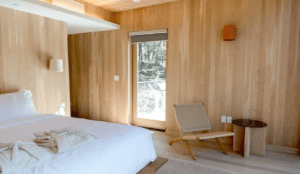
B. Saving money with shared dormitories
35. Cost Savings:
Staying in a shared dormitory is one of the most economical options for solo travelers. As you only pay for a bed rather than an entire room, it allows you to allocate more of your budget to experiences and activities during your trip.
36. Social Experience:
Dormitories facilitate interactions with fellow travelers, making it easy to meet like-minded individuals from various backgrounds. Sharing experiences and travel tips with other guests can enhance your journey and possibly lead to new friendships.
37. Safety and Security:
Most hostels ensure the safety of their guests with secure access, lockers for belongings, and often on-site staff who can assist with any concerns.
While sharing a room, always exercise standard precautions and secure your belongings.
C. Prioritizing comfort and affordability
38. Reading Reviews:
Before booking budget-friendly accommodations, read reviews from previous guests to get an idea of the quality and comfort they offer. Websites like TripAdvisor, Booking.com, or Hostelworld provide valuable insights from fellow travelers.
39. Location:
Consider the location of your accommodation in relation to the places you want to explore. Opting for lodgings close to public transportation or major attractions can save both time and money on commuting.
40. Amenities:
While staying in budget-friendly accommodations, some amenities are still essential for a comfortable stay. Look for places that offer free Wi-Fi, secure storage options, and communal spaces where you can relax and interact with other travelers.
41. Timing:
Booking in advance often results in better deals and ensures you secure a spot in popular hostels or guesthouses. Additionally, booking early allows you to explore a wider range of options and find the most suitable accommodation for your preferences and budget.
By choosing budget-friendly accommodations, solo travelers can significantly reduce their travel expenses while still enjoying comfortable and enjoyable stays.
Whether it’s staying in a lively hostel with a vibrant social atmosphere or opting for a cozy guesthouse, these accommodations offer unique experiences and the chance to connect with fellow travelers from around the world.
Prioritizing both comfort and affordability ensures a memorable and cost-effective solo trip.
VI. Cooking Your Meals and Saving on Food
A. Preparing some meals to cut down on eating out expenses
42. Cost Savings:
Eating out at restaurants for every meal can quickly add up and strain your travel budget. By preparing some of your meals, you can significantly reduce food expenses and allocate that money to other experiences during your trip.
43. Local Cuisine Experience:
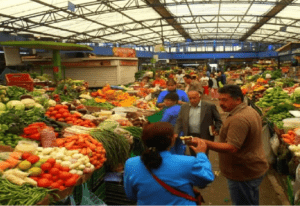
Cooking your meals allows you to explore local markets, interact with locals, and try fresh produce and ingredients unique to your travel destination. It’s a great way to immerse yourself in the local culture and culinary traditions.
44. Flexibility and Dietary Preferences:
Preparing your meals gives you control over the type of food you eat and ensures you can accommodate any dietary preferences or restrictions you may have.
B. Staying in accommodations with kitchen facilities
45. Hostels and Guesthouses:
Many hostels and guesthouses offer shared kitchen facilities where guests can prepare their meals. These communal kitchens are equipped with cooking utensils, stoves, and refrigerators, providing you with the convenience of preparing your food.
46. Apartment Rentals:
If you prefer more privacy and independence, consider renting an apartment or a vacation home with a kitchen. This option is especially suitable for longer stays, as it gives you the freedom to cook and dine at your own pace.
C. Buying fresh produce from local markets
47. Cost-Effectiveness:
Local markets are often more affordable than supermarkets, especially in tourist areas where grocery prices can be inflated. By purchasing fresh produce and groceries from local markets, you can save money on food expenses.
48. Variety and Freshness:
Local markets offer a wide variety of fresh fruits, vegetables, meats, and other local specialties. Trying local ingredients not only saves money but also enhances your culinary experience.
49. Supporting Local Economy:
Buying from local markets directly supports the local economy and farmers, making your food choices more sustainable and responsible.
Tips for Cooking Your Meals During Solo Travel
50. Simple and Easy Recipes:
Opt for simple and easy-to-cook recipes that don’t require many ingredients or complex cooking techniques. This way, you can save time and effort while still enjoying delicious and satisfying meals.
51. Meal Planning:
Plan your meals in advance to avoid food wastage and ensure you have the necessary ingredients on hand. This can also help you stay organized and budget-conscious.
52. Cooking Together:

If you’re staying in a hostel or sharing a kitchen with other travelers, consider cooking together with fellow guests. It can be a fun and social experience, and you might even learn new recipes and cooking tips from others.
By preparing some of your meals and utilizing kitchen facilities in your accommodation, you can significantly cut down on eating-out expenses during your solo trip.
Exploring local markets for fresh produce adds a delightful culinary dimension to your journey and allows you to enjoy the flavors of your destination while being budget-conscious.
Cooking your meals not only saves money but also provides an opportunity to connect with the local culture through food.
VII. Utilizing Local Transport and Walking
A. Opting for public transportation over taxis or rental cars
53. Cost-Effective:
Public transportation, such as buses, trains, or local modes of commuting, is often more budget-friendly compared to hiring taxis or renting cars.
Using public transport can save you a significant amount of money, especially for daily commuting within the city or traveling between towns.
54. Eco-Friendly:
Choosing public transport over private vehicles contributes to reducing your carbon footprint. It’s a more environmentally friendly option, making it a responsible choice for eco-conscious travelers.
55. Local Experience:
Using local transport allows you to experience the daily life and routines of the locals. It offers an authentic glimpse into the culture and helps you connect with the place on a deeper level.
B. Exploring the area on foot or by renting a bicycle
56. Cost-Free:
Walking is the most budget-friendly mode of transportation, as it requires no additional expenses. It gives you the freedom to explore the city at your own pace, and you can stumble upon hidden gems that might be missed when using other forms of transport.
57. Immersive Experience:
Walking or cycling through the streets immerses you in the local environment and allows you to interact with locals up close.
You can observe the architecture, street art, and small details that may go unnoticed when moving in a vehicle.
58. Healthy and Leisurely:
Walking and cycling are great forms of exercise and can add a healthy aspect to your trip. It’s an enjoyable way to explore while staying active and maintaining your well-being during the journey.
C. Immersing yourself in the local culture
59. Interaction with Locals:

Utilizing local transport and walking opens up opportunities for interactions with locals. Engaging in conversations, seeking directions, asking for recommendations from residents, or even staying with them can lead to valuable insights into the local culture and traditions.
It also becomes a win-win situation.
60. Observing Local Customs:
While walking or using public transportation, you can witness local customs, rituals, and daily practices, which contribute to a deeper understanding of the destination’s culture.
61. Trying Local Street Food:
Walking through markets and local neighborhoods exposes you to street food stalls and eateries that offer authentic regional cuisine. Trying local delicacies is a delightful way to savor the flavors of the place and indulge in its culinary heritage.
Tips for Utilizing Local Transport and Walking
62. Research Local Transport Options:
Before your trip, research the available public transport options at your destination. Familiarize yourself with bus routes, train schedules, and any local passes or cards that offer discounted fares.
63. Plan walking Tours:
Plan walking tours to explore specific areas of interest. There are often self-guided walking tours or free walking tours conducted by locals or tour companies that can enhance your experience.
64. Stay Mindful of Safety:
While walking, be mindful of your surroundings and prioritize safety, especially in unfamiliar areas or during late hours. It’s advisable to walk in well-lit and populated areas and avoid poorly lit or isolated spots.
By opting for public transportation, walking, and cycling, you not only save money but also have the chance to immerse yourself in the local culture and experience the destination from a more authentic perspective.
It’s a rewarding way to connect with the place, its people, and its traditions while being kind to your budget and the environment.
VIII. Exploring Free Activities and Attractions
A. Taking advantage of free or low-cost activities
65. Local Festivals:
Research local festivals and cultural events happening during your visit. Many destinations host free or affordable festivals that showcase traditional music, dance, crafts, and local cuisines. Attending these events provides an immersive experience of the local culture.
66. Public Parks:
Visit public parks and gardens, which often offer free entry. These green spaces are ideal for relaxation, picnics, or even joining in local recreational activities. Enjoying nature in these parks can be a refreshing and budget-friendly way to spend your time.
67. Beaches and Lakes:
If you’re in a coastal or lakefront destination, spend time at the beach or lakeside. Sunbathing, swimming, and strolling along the shorelines are enjoyable and cost-free activities.
B. Researching parks, museums, festivals, and walking tours
68. Free Museums and Attractions:
Many destinations have museums, galleries, or historical sites that offer free admission on specific days or during certain hours. Research such opportunities to explore art, history, and culture without spending money.
69. Walking Tours:
Look for free walking tours conducted by local guides or organizations. These tours often cover significant landmarks, historical sites, and lesser-known spots, providing valuable insights into the destination’s heritage.
70. Public Libraries and Events:
Check out public libraries and community centers for events like book readings, workshops, or cultural presentations. Participating in these events not only enriches your experience but also introduces you to locals with shared interests.
C. Experiencing the culture and history without extra costs
71. Street Markets:
Wander through local street markets to experience the vibrant atmosphere and discover unique handicrafts, souvenirs, and local products. Exploring these markets allows you to interact with artisans and support the local economy without overspending.
72. Public Art and Architecture:
Take leisurely strolls through the city to appreciate public art installations, historical buildings, and architectural landmarks. These features often reflect the city’s heritage and artistic expression.
73. Local Music and Performances:
Keep an eye out for street performers, musicians, or dance groups that showcase their talents in public spaces. Enjoying live performances by local artists adds an authentic touch to your travel experience.
Tips for Exploring Free Activities and Attractions
74. Research in Advance:
Plan your itinerary by researching free activities and attractions in the destination beforehand. Check local websites, tourism boards, and travel forums for recommendations.
75. City Tourism Cards:
Some cities offer tourism cards that provide discounted or free access to attractions, public transport, and guided tours. Consider purchasing these cards if they align with your interests and itinerary.
76. Ask Locals:
Engage with locals and ask for their suggestions on budget-friendly activities. They can recommend hidden gems and lesser-known places that might not be listed in guidebooks.
77. Pack Snacks and Water:
Bring snacks and a refillable water bottle to avoid spending money on expensive food and beverages during your outings.
Exploring free activities and attractions allows you to make the most of your solo trip without straining your budget. Embrace the local culture, history, and artistic expressions available in the destination, and create meaningful memories without extra costs.
IX. Using Travel Apps and Websites for Discounts
A. Utilizing apps and websites for discounted accommodations
78. Airbnb:
Airbnb is a popular platform that connects travelers with hosts offering unique accommodations, including apartments, houses, and private rooms.
Often, you can find budget-friendly options that are more affordable than traditional hotels on short- and long-term homestays and experiences.
79. Booking.com:
This website allows you to compare prices and book accommodations, including hotels, hostels, guesthouses, and more. Look for deals and discounts on the site to save on your stay.
80. Hostelworld:
If you prefer staying in hostels, Hostelworld is an excellent platform to find and book budget-friendly hostels around the world. You can read reviews and see ratings from other travelers to make an informed choice.
81. Couchsurfing:
For the most budget-conscious travelers, Couchsurfing offers a unique way to connect with locals who provide free accommodation on their couch or spare room. It’s a great opportunity to meet new people and experience local hospitality.
B. Finding deals on transportation, attractions, and dining
82. Skyscanner:
Skyscanner is a flight comparison website that allows you to find the best deals on flights. Be flexible with your travel dates to spot cheaper fares and save on air travel.
83. Rome2rio:
Rome2rio is a travel planning website that helps you find the most cost-effective transportation options between different locations. It compares flights, trains, buses, and other modes of transport to find the best route at the lowest cost.
84. Groupon:
Groupon offers discounts on various services, including attractions, activities, and dining. Check the site for deals in your travel destination to enjoy discounts on experiences and meals.
85. TripAdvisor:
TripAdvisor provides user reviews and ratings for accommodations, attractions, and restaurants. Look for establishments with good reviews and reasonable prices to make the most of your budget.
86. Local Restaurant Apps:
Many destinations have local restaurant apps that offer discounts, special offers, or loyalty programs. Use these apps to find affordable places to eat and enjoy local cuisine.
Tips for Using Travel Apps and Websites for Discounts
87. Set Fare Alerts:
If you have flexible travel dates, set fare alerts on flight comparison websites to receive notifications when prices drop for your chosen route.
88. Check direct websites:
After finding deals on third-party platforms, visit the official websites of airlines, hotels, or attractions to check for exclusive offers or discounts.
89. Read reviews:
Before booking any accommodation or activity, read reviews from other travelers to ensure it meets your expectations in terms of value and quality.
90. Combine Discounts:
Some travel apps and websites may offer promo codes or special deals. Check if you can combine multiple discounts to maximize savings.
Use of travel apps and websites for discounts can significantly reduce your expenses during solo trips. With careful planning and the right tools, you can find affordable accommodations, transportation, and activities, allowing you to enjoy your solo escapades without breaking the bank.
X. Packing Smart and Avoiding Extra Baggage Fees
A. Packing only the essentials to avoid additional fees when on tight budget
91. Plan Your Wardrobe:
Before packing, plan your outfits for each day of the trip. Choose versatile clothing items that can be mixed and matched to create different looks.
92. Pack Light:
Stick to the essentials and avoid overpacking. Remember that you can always do laundry during your trip if needed.
93. Use packing Cubes:
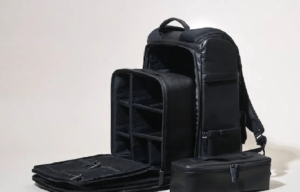
Packing cubes can help you organize your belongings and compress clothing to maximize space in your bag.
94. Limit Toiletries: Bring travel-sized toiletries or transfer them into small containers to save space and weight.
95. Consider Multi-Functional Items:
Opt for multi-functional items like a travel towel that can also be used as a beach blanket or sarong.
B. Researching airline baggage policies
96. Check weight and Size Restrictions:
Each airline has specific baggage weight and size restrictions. Research the baggage policies of your chosen airline before your trip to avoid extra fees.
97. Travel with Carry-On Only:
If possible, travel with just a carry-on bag to avoid checked baggage fees altogether. This can save you money and time at the airport.
98. Weigh Your Luggage:
Use a luggage scale to weigh your bag before heading to the airport. This way, you can ensure it meets the airline’s weight limit.
99. Know Your Personal Item Allowance:
Most airlines allow passengers to bring a personal item, such as a small backpack or purse, in addition to their carry-on. Make the most of this allowance to pack more essentials.
C. Prioritizing experiences over material items
100. Think Experiences, Not Souvenirs:
Instead of spending money on souvenirs, focus on creating memorable experiences during your solo trip.
101. Capture Memories Digitally:
Take photos and videos to capture the moments rather than buying physical souvenirs. Digital memories are lightweight and won’t add to your baggage.
102. Invest in Experiences:
Allocate your budget to experiences such as local tours, cultural activities, or unique dining experiences. These will enrich your journey and create lasting memories.
103. Minimalist Approach:
Embrace a minimalist mindset and appreciate the freedom of traveling light. The less you carry, the more flexible and enjoyable your solo trip can be.
By packing smart and prioritizing experiences over material items, you can avoid extra baggage fees and enjoy a more fulfilling and budget-friendly solo travel experience.
Remember to research airline baggage policies and pack only what you truly need for a hassle-free journey.
XI. Staying Connected Without Overspending
A. Avoiding costly international roaming charges
104. Check Roaming Plans:
Before your solo trip, inquire with your mobile carrier about international roaming plans. Some carriers offer temporary packages that provide data and calling services at reduced rates for specific destinations.
105. Disable Roaming:
If you decide not to purchase a roaming plan, make sure to disable roaming on your phone to avoid accidental data usage and high charges.
B. Using local SIM cards or pocket Wi-Fi devices
106. Get a Local SIM Card:
One of the most cost-effective ways to stay connected is by purchasing a local SIM card upon arrival at your destination. Local SIM cards usually offer better rates for data and calls compared to international roaming.
107. Unlocked Phone:
Ensure that your phone is unlocked and compatible with the local network frequencies. This way, you can easily switch out your existing SIM card for a local one.
108. Research SIM Card Options:
Before your trip, research different local carriers and their prepaid SIM card options. Look for packages that offer sufficient data and call minutes for your needs.
109. Pocket Wi-Fi Devices:
Another option is to rent a pocket Wi-Fi device. These devices provide a portable Wi-Fi hotspot that you can carry with you and connect multiple devices at once.
C. Utilizing free Wi-Fi in cafes and public spaces
110. Wi-Fi in Accommodations:
Many hotels, hostels, and guesthouses offer free Wi-Fi for guests. When booking your accommodation, check if Wi-Fi is included.
111. Cafes and Restaurants:
Explore local cafes, restaurants, and eateries that provide free Wi-Fi to customers. Grab a coffee or a meal while catching up on your online activities.
112. Public Spaces:
Some cities offer free Wi-Fi in public areas, such as parks, plazas, and tourist attractions. Look out for Wi-Fi signs or ask locals about free internet hotspots.
113. Be Cautious on Public Wi-Fi:
While using public Wi-Fi, be cautious when accessing sensitive information like passwords or financial details. Public networks may not always be secure, so avoid making important transactions on them.
By following these tips, you can stay connected during your solo trip without overspending on international roaming charges.
Whether you choose a local SIM card, a pocket Wi-Fi device, or utilize free Wi-Fi in public spaces, you’ll have the convenience of staying connected without breaking your budget.
XII. Tracking Daily Expenses and Staying Within Budget
A. Using budgeting apps or spreadsheets to monitor spending
114. Download Budgeting Apps:
There are various budgeting apps available for smartphones that can help you track your daily expenses. These apps allow you to input your spending and categorize expenses, making it easier to see where your money is going.
115. Set a Daily Budget:
Before your trip, establish a daily budget based on your overall trip budget. Use the budgeting app to set spending limits for different categories like accommodation, transportation, food, activities, etc.
116. Record Expenses Regularly:
Make it a habit to record your expenses in the budgeting app or a spreadsheet each day. This will give you a clear picture of how much you have spent and how much you have left in your budget.
117. Analyze Spending Patterns:
Regularly review your spending patterns to identify areas where you may be overspending. This will help you adjust your budget accordingly and make more informed decisions during your trip.
118. Stay Disciplined:
Tracking your expenses can be an eye-opening experience. Stay disciplined and try to stick to your budget as closely as possible to avoid running out of funds before the end of your trip.
B. Prioritizing experiences over unnecessary purchases
119. Create a Travel Bucket List:
Before your trip, make a list of the must-see places and experiences you want to have during your solo journey. Focus on these experiences as a priority rather than on material items.
120. Avoid Impulse Buying:
When you come across souvenirs or items for sale, take a moment to assess whether it’s something you truly need or if it’s an impulse purchase. Avoid buying items that may end up being unused or forgotten.
121. Memories Over Material Things:
Instead of buying physical souvenirs, consider capturing memories through photographs, videos, or a travel journal. These memories will last a lifetime and won’t add extra weight to your luggage.
122. Invest in Experiences:
Allocate a portion of your budget for experiences like local tours, cultural events, and activities that align with your interests. These experiences will enrich your trip and create lasting memories.
124. Be Mindful of Dining Expenses:
While it’s enjoyable to try local cuisine, dining out for every meal can add up quickly. Strike a balance by sampling local dishes without overspending on restaurants.
By using budgeting apps or spreadsheets to track your expenses and prioritizing experiences over unnecessary purchases, you can stay within your budget during your solo trip.
Remember that the journey itself is an experience, and focusing on meaningful experiences will make your adventure more fulfilling without compromising your finances.
XIII. Engaging with Locals and Fellow Travelers
A. Seeking insights from locals and fellow travelers
123. Strike Up Conversations:
Don’t hesitate to initiate conversations with locals and fellow travelers during your solo trip. Be friendly and approachable, and you’ll find that many people are willing to share their experiences and insights.
124. Visit local hangouts:
Head to local cafes, restaurants, and bars where you’re likely to encounter friendly locals and fellow travelers. These places often serve as meeting points where you can exchange travel tips and recommendations.
125. Join group tours or activities:
Participate in group tours or activities organized by locals or travel agencies. It’s an excellent way to meet like-minded individuals and share travel stories and advice.
126. Ask for recommendations:
Ask locals for their favorite places to eat, visit, and explore. They might suggest off-the-beaten-path attractions and eateries that are not well-known to tourists.
B. Discovering hidden gems and cost-effective options
127. Explore Non-Touristy Areas:
Venture away from the main tourist spots and explore neighborhoods less frequented by tourists. You’ll likely find lower-priced accommodations, eateries, and activities in these areas.
128. Check out local markets:
Visit local markets where you can find fresh produce, souvenirs, and other items at more reasonable prices compared to touristy shops.
129. Attend Local Festivals and Events:
Research local festivals and events taking place during your visit. These often offer a glimpse into the local culture and are usually free or low-cost to attend.
130. Get Recommendations on Affordable Eateries:
Locals can suggest budget-friendly restaurants and street food vendors that serve delicious meals without breaking the bank.
131. Use social media and travel forums:
Join travel-related social media groups and forums to connect with fellow travelers who have visited your destination. They may have valuable insights on saving money and finding hidden gems.
132. Embrace Couchsurfing:
Consider using platforms like Couchsurfing, where locals offer their homes for free or at a minimal cost to travelers. It’s an excellent way to experience local hospitality and save on accommodation expenses.
Engaging with locals and fellow travelers not only enriches your travel experience but also helps you discover hidden gems and cost-effective options that might not be available in travel guides.
Be open to new friendships and experiences, and you’ll find that interacting with people from different cultures can be one of the most rewarding aspects of solo travel.
XIV. Conclusion
A. Emphasizing the joy of budget-friendly solo travel
Embarking on a solo journey doesn’t have to be expensive or overwhelming. With careful planning, budgeting, and smart decision-making, you can make the most of your solo escapades without breaking the bank.
By following the budget-friendly travel tips provided in this article, you can save money, while still enjoying incredible experiences and personal growth during your trip in 2024.
B. Encouraging readers to embark on their own adventures
Now that you have a toolkit of budget-friendly travel tips, it’s time to take the plunge and embark on your own solo adventure!
Solo travel is a liberating and transformative experience that allows you to discover the world at your own pace, immerse yourself in new cultures, and build lifelong memories. Embrace the thrill of exploring new places, meeting new people, and pushing your boundaries.
Whether you’re wandering through bustling cities, trekking in serene mountains, or relaxing on pristine beaches, solo travel offers a unique and rewarding journey of self-discovery.
Remember, it’s not about how much money you spend on your travels, but the experiences and memories you create along the way.
So, pack your bags, plan your trip, and set off on your budget-friendly solo adventure. The world is waiting for you to explore and discover its wonders. Happy travels!
FAQs:
Q1. What are some affordable destinations for solo travelers?
Some affordable destinations for solo travelers include Thailand, India, Vietnam, Indonesia, Cambodia, Portugal, Hungary, Bolivia, and Morocco. These countries offer budget-friendly options for accommodation, food, and activities.
Q.2 How can I find cheap flights for solo travel?
To find cheap flights for solo travel, consider the following tips:
Be flexible with your travel dates and destinations to take advantage of deals.
Use flight search engines like Skyscanner, Kayak, or Google Flights to compare prices across different airlines.
Sign up for airline newsletters and follow them on social media to stay updated on promotions and discounts.
Consider booking flights during off-peak seasons when prices tend to be lower.
Keep an eye out for flash sales and last-minute deals.
Q. 3 Are there any reliable websites or platforms for booking budget accommodations?
There are several reliable websites and platforms for booking budget accommodations. Some popular options include:
Hostelworld: A platform specializing in budget-friendly hostels.
Booking.com: Offers a wide range of accommodation options, including budget hotels, guesthouses, and apartments.
Airbnb: Allows you to rent unique accommodations from local hosts, including budget-friendly options.
Couchsurfing: A platform where locals offer free accommodation to travelers, promoting cultural exchange and community.
Q. 4 Here are some ways to save money on food while traveling solo:
Eat at local restaurants or street food stalls, as they often offer affordable and authentic cuisine.
Visit local markets and grocery stores to buy ingredients for simple meals or picnics.
Take advantage of complimentary breakfasts offered by hostels or accommodations.
Cook your own meals in hostel kitchens or shared apartment facilities.
Look for lunchtime specials or set menus offered by restaurants, which are often more budget-friendly than dinner options.
Q. 5. Are there any safety concerns specific to solo travelers?
Safety concerns for solo travelers include:
Researching and understanding the local customs, laws, and potential risks of your destination.
Keeping your belongings secure by using locks, money belts, or other travel security gear.
Avoiding unsafe areas, particularly at night, and staying aware of your surroundings.
Informing someone back home of your itinerary and regularly checking in with them.
Q.6 How can I meet other travelers and make friends while on a tight budget?
Trusting your instincts and being cautious when interacting with strangers.
Utilizing safe transportation options and avoiding unauthorized taxis or rideshares.
To meet other travelers and make friends while on a tight budget:
Stay at social accommodations such as hostels, where you can interact with fellow travelers in common areas.
Join free walking tours or group activities organized by hostels or local communities.
Use social media travel groups or forums to connect with other travelers in your destination.
Attend local events, festivals, or meetups where you can interact with like-minded travelers.
Volunteer or participate in work exchange programs, which provide opportunities to meet people while giving back to the community.
Q.7. What are some common mistakes to avoid when traveling solo?
Common mistakes to avoid when traveling solo:
Overpacking: Travel light to avoid extra baggage fees and make your journey more manageable.
Overplanning: Leave room for spontaneity and flexibility in your itinerary to adapt to new opportunities or changes.
Not researching local customs and etiquette: Familiarize yourself with the local culture to show respect and avoid unintentional faux pas.
Ignoring travel insurance: Protect yourself against unexpected expenses, such as medical emergencies or trip cancellations, by having adequate travel insurance.
Overspending on unnecessary items: Prioritize experiences over material things, and avoid impulse purchases that can quickly drain your budget.
Not taking advantage of free or low-cost activities: Research and explore the many affordable or free attractions, events, and sights in your destination.
Isolating yourself: Step out of your comfort zone, interact with locals and other travelers, and embrace the opportunities for social connections and cultural exchange.


